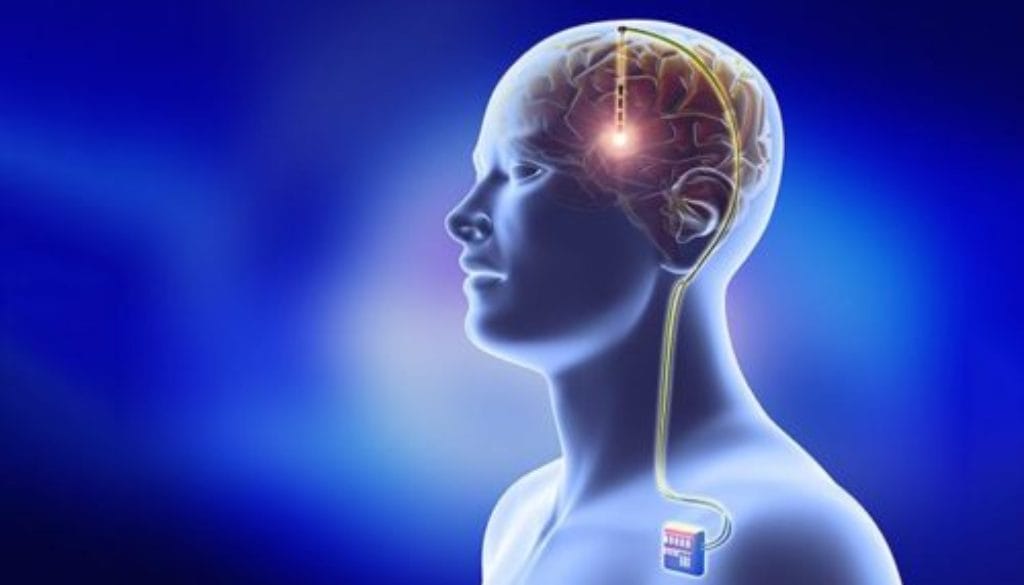DBS (Deep Brain Stimulation)

A team of neuroscientists at Georgetown University Medical Center have found, in animal models, that they can "switch off" epileptic seizures. The findings, published online in Proceedings of the National Academy of Sciences (PNAS), provide the first evidence that while different types of seizures start in varied areas of the brain, they all can be controlled by targeting a very small set of neurons in the brain or their tendril-like neuronal axons.
Zeroing in on specific neurons suggests that treatment for epilepsy can be improved, researchers say. For example, the deep brain stimulation used today could be minutely targeted at the cell body of these neurons or at the areas their axons touch, depending on the type of seizure, says the study's senior investigator, Patrick A. Forcelli, Ph.D., an assistant professor in neuroscience and in pharmacology and physiology at Georgetown.
"We have found a major choke point in epilepsy circuits in rat brains that we believe can be harnessed to disrupt the onset of seizures or to stop their propagation within the brain," he says. "Circuit-based therapy for people will help offset the known side effects that come with drug therapy and other techniques."
According to the CDC, in the U.S., about 3 million adults and almost 500,000 children have epilepsy, making the incidence about 1% of the population, and the fourth most common brain disorder. (Epilepsy is diagnosed when a person has had more than one seizure.)
Seizures occur when nerve cells in the brain misfire. While there are about 30 specific types of seizures, there are two main categories: focal, which start in particular areas of the brain, and generalized, which occur when nerve cells on both sides of the brain misfire. Within this category are tonic-clonic (formerly known as grand mal) convulsive seizure and absence (formerly known as petit mal).
Researchers have known for about 30 years that while inhibiting a certain area of the brain, the substantia nigra pars recticulata (SNpr) can help stop a seizure, the circuits by which the SNpr controls a seizure have remained unclear. The SNpr is a small area deep within the brain. "It is usually thought to be involved in movement and movement disorders," says Forcelli. "We knew targeting SNpr can stop a seizure, but we didn't know how. Neurons in this area have axonal projections that go to many different parts in the brain."
This study, he says, is built upon the pioneering work done at GUMC in the 1980s when researchers, led by Karen Gale, Ph.D., "built a metaphorical Rand McNally-type atlas of neuronal pathways involved in seizures and epilepsy—these maps have moved forward both basic biology and for pharmacological treatment of epilepsy." The aim of his research is "to make a "Google maps" version with higher resolution and the ability to zoom in on each address, to improve brain stimulation therapy," says Forcelli.
With his team, Forcelli used four models of experimental epilepsy in seizure-prone rats, designed to reflect a different type of seizure (absence, forebrain tonic-clonic, brainstem tonic-clonic, and limbic) seen in human epilepsies.
They were able to stop these seizures by placing light-sensitive ion channels into neurons in the SNpr; when exposed to light, the neurons can be turned on or off. They found that seizures could be turned off by either silencing activity of the SNpr cell bodies or, in some cases, the areas that these neurons project to.
"We can't target therapy if we don't know how the circuits work. Discovering that silencing one area that a SNpr projects to can turn off specific seizures suggests a much more targetable therapy. For example, deep brain stimulation could be aimed at that area," Forcelli says.
"These findings clarify a long-standing question in the field: the role these individual SNpr neural pathways play in the control of seizures," he says.
Source: Georgetown University Medical Center





